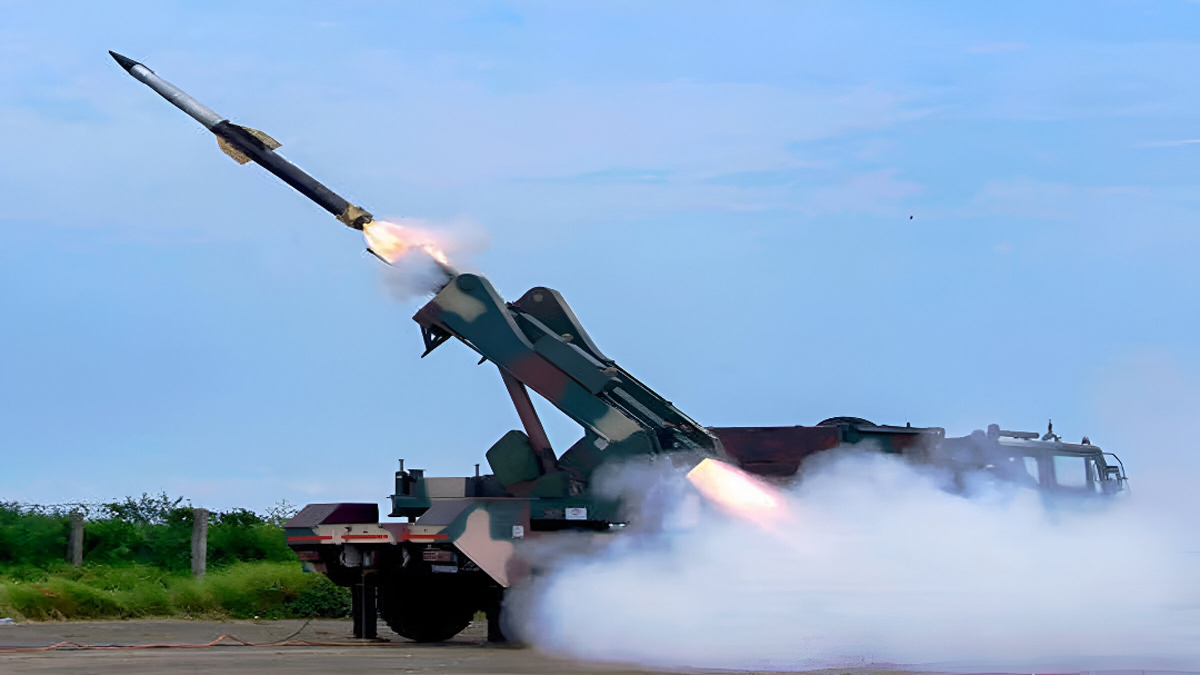Now Reading: Indian Army to Receive Major Air Defence Boost with Rs 30,000 Crore QRSAM System
-
01
Indian Army to Receive Major Air Defence Boost with Rs 30,000 Crore QRSAM System
Indian Army to Receive Major Air Defence Boost with Rs 30,000 Crore QRSAM System

The Indian Army is poised for a monumental upgrade to its air defence capabilities with the impending acquisition of the indigenous Quick Reaction Surface-to-Air Missile (QRSAM) system, a deal valued at approximately Rs 30,000 crore. This significant investment is expected to be greenlit by the Ministry of Defence during a Defence Acquisition Council meeting slated for the fourth week of June. The move underscores India’s commitment to bolstering its self-reliance in defence technology and enhancing its preparedness against evolving aerial threats.
The procurement will involve three full regiments of the QRSAM system, developed by the Defence Research and Development Organisation (DRDO), and these units are earmarked for strategic deployment along both India’s western and northern borders. This positioning is crucial given the ongoing security challenges and the need for robust air defence shields in these sensitive regions.
Revolutionizing Battlefield Air Defence
The QRSAM system is a cutting-edge, highly mobile air defence solution designed to provide rapid and effective protection against a wide array of aerial threats, including fighter jets, helicopters, and unmanned aerial vehicles (UAVs). Its primary strength lies in its “quick reaction” capability, enabling it to detect, track, and engage targets with exceptional speed and precision, even while on the move or during short halts. This mobility is a critical advantage for protecting forward bases and mechanized columns during dynamic battlefield operations.
Key features of the QRSAM system include:
- High Mobility: Mounted on 8×8 heavy mobility vehicles, the QRSAM can swiftly relocate to adapt to changing tactical situations.
- 360-degree Coverage: The system boasts two four-walled radars – the Active Array Battery Surveillance Radar (BSR) and the Active Array Battery Multifunction Radar (BMFR) – which provide comprehensive 360-degree surveillance and target tracking capabilities.
- Automated Command and Control: A fully automated command and control system ensures minimal reaction time and efficient engagement of multiple targets.
- Electronic Counter-Countermeasure (ECCM) Capabilities: The QRSAM is designed to be immune to jamming, ensuring its effectiveness in contested electromagnetic environments.
- Indigenous Technology: The system features an indigenous radio frequency seeker and a dual-thrust propulsion motor, showcasing India’s advancements in missile technology.
- Operational Range: With an effective range of approximately 30 kilometers, the QRSAM will complement existing systems like the Medium Range Surface-to-Air Missile (MRSAM) and Akash, creating a layered air defence shield for short to medium ranges.
Addressing Evolving Threats and Enhancing Preparedness
The decision to acquire the QRSAM systems comes on the heels of recent evaluations of India’s air defence network, particularly in light of events like “Operation Sindoor,” where Indian air defence systems successfully thwarted multiple aerial threats. The QRSAM’s ability to counter low-flying jets and drones, including those of Turkish and Chinese origin, is particularly significant in the current security landscape.
The Army Air Defence is simultaneously working on inducting new radar systems, very short-range air defence systems (VSHORADS), and advanced drone countermeasures, including jammers and laser-based systems. This comprehensive approach aims to create a robust and integrated air defence network capable of addressing the full spectrum of aerial threats.
The induction of the QRSAM system will not only bolster the Indian Army’s combat readiness but also strengthen the nation’s indigenous defence manufacturing ecosystem, aligning with the “Make in India” initiative. This move signifies a major step towards enhancing India’s strategic autonomy and its ability to safeguard its airspace from all forms of aerial aggression.










